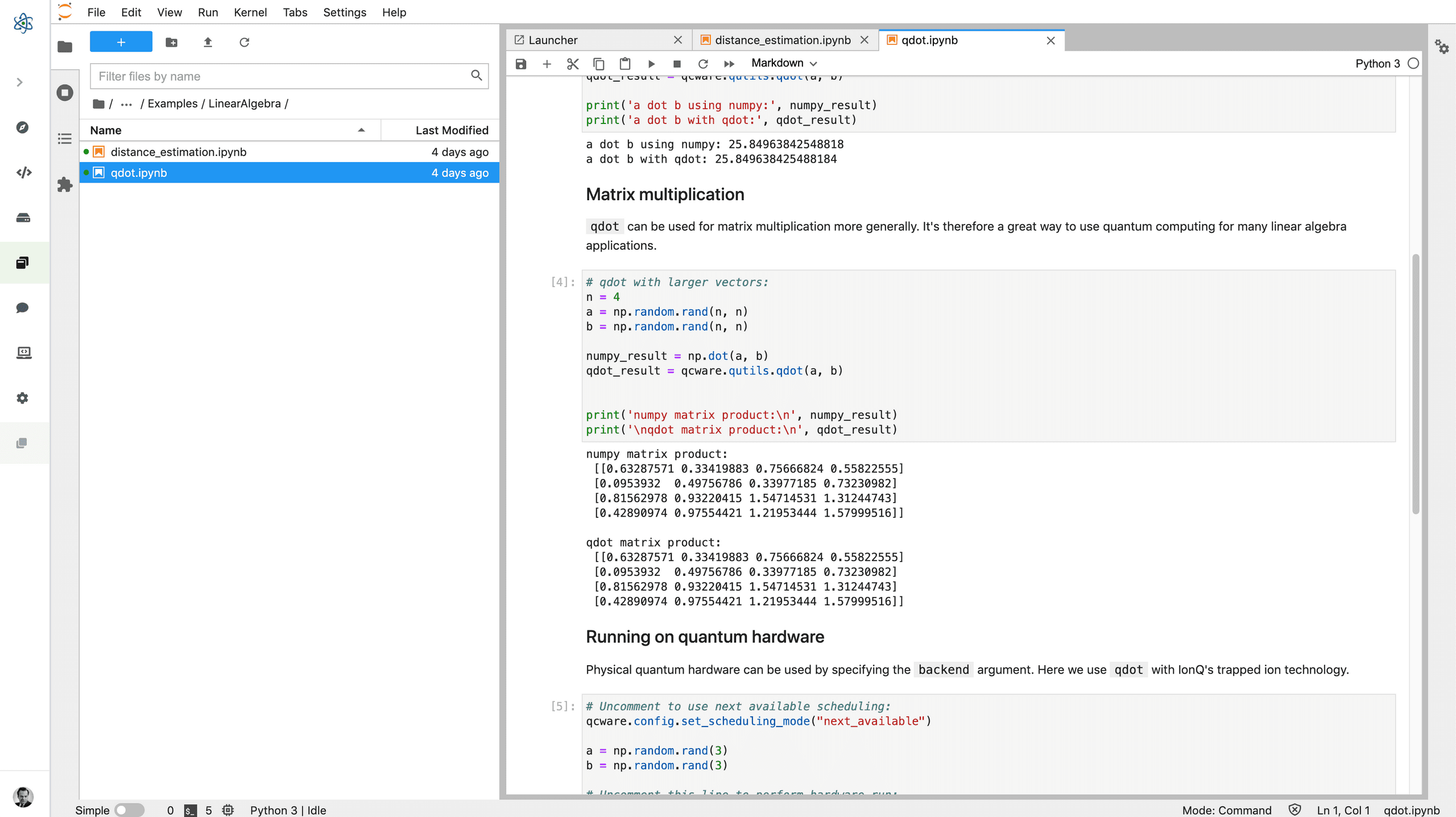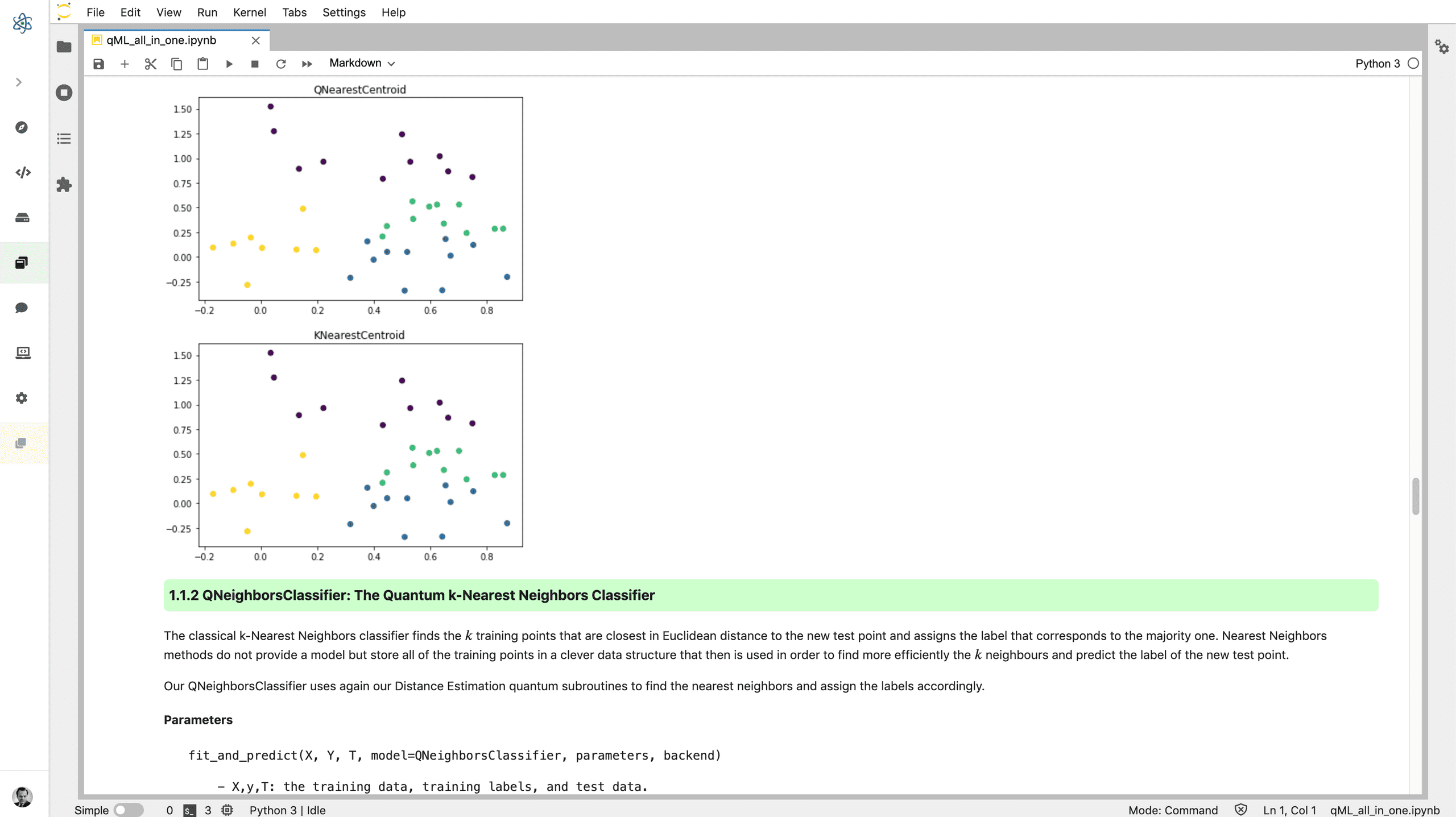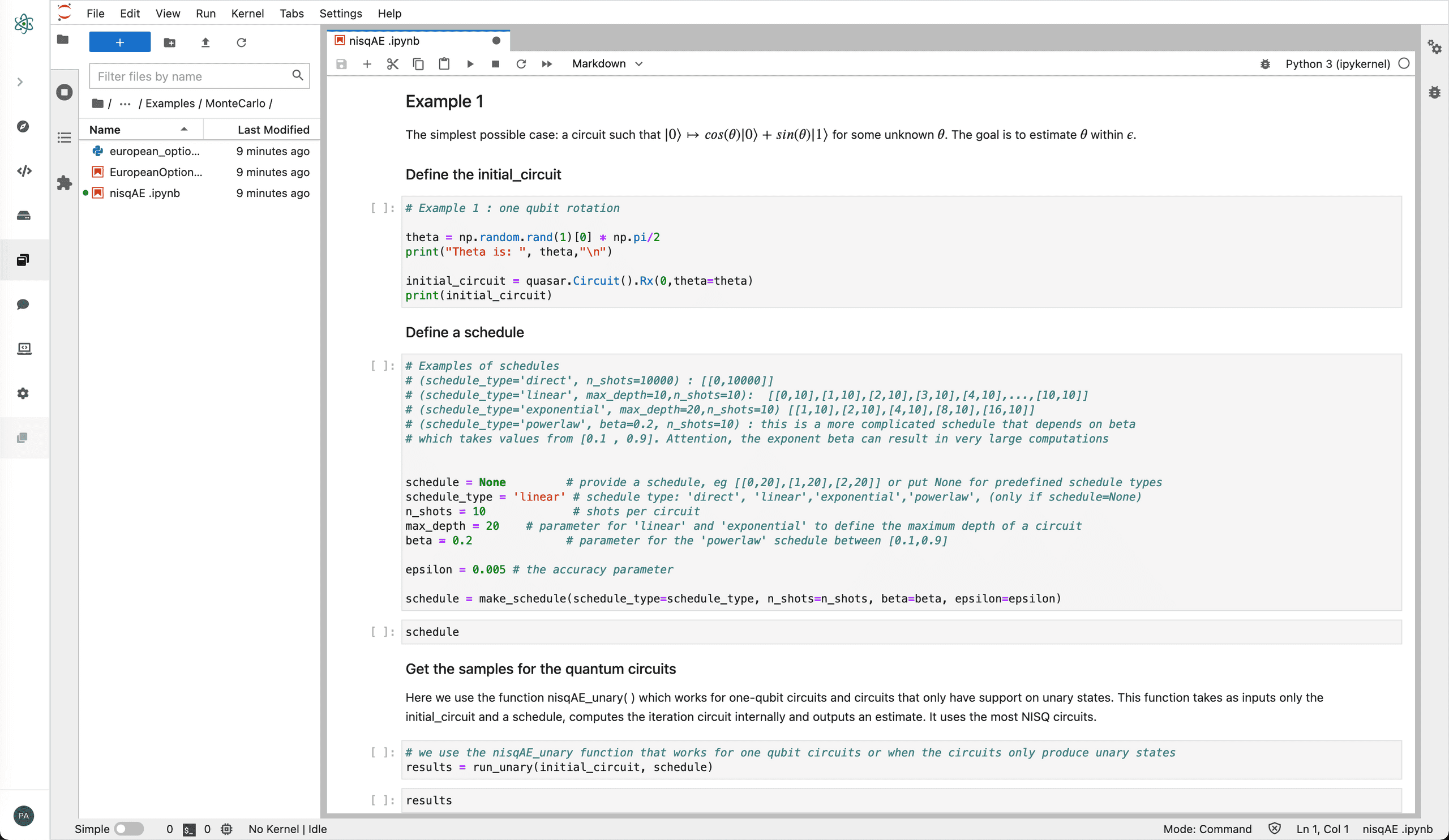Binary Optimization
Get a significant performance boost from quantum hardware and use the latest improvements for gate-based approaches.
Quantum Annealing
Bring your own QUBO (BYOQ). Having a hard time getting good solutions? We pick the best parameters for quantum backends and get better results than the defaults.
Learn how to use it - read the docs
Interested in how we do it? - read the paper
Quantum Approximate Optimization Algorithm (QAOA)
Try our off-the-shelf QAOA implementation and see how well it performs.
Learn how to use it - read the docs
Interested in how we do it? - read the paper

Linear Algebra
Execute basic linear algebra functions like matrix multiplication and distance estimation on a quantum computer.
Distance Estimation
Euclidean distance calculations are at the heart of many common engineering problems and algorithms. Our algorithm library can calculate distances (up to some finite epsilon) faster on current NISQ hardware.
Learn how to use it - read the docs
Interested in how we do it? - read the paper
Matrix Multiplication (Dot Product)
This is matrix multiplication on steroids.
Learn how to use it - read the docs
Interested in how we do it? - read the paper

Machine Learning
Try out quantum data loaders, as well as algorithms with guaranteed speed-ups on clustering, classification, and regression.
Supervised Learning
Import your data, whether it's enterprise data or a dataset from Kaggle. Execute classification and regression algorithms just like your favorite classical machine learning library. Take a look at our Q Nearest Neighbors classifier and regressor and Q Nearest Centroid classifier.
Learn how to use it - read the docs
Interested in how we do it? - read the paper
Unsupervised Learning
Q-means performs better than its classical counterpart, k-means, for higher-dimensional data sets. For a data set with 64 dimensions q-means can be 10 times faster than k-means. With 256 dimensions it is 30 times faster, and for 1,000 dimensions it is 100 times faster.
Learn how to use it - read the docs
Interested in how we do it? - read the paper

Monte Carlo
Determine price for options and other risky assets and portfolios, complete Value at Risk (VaR) and Conditional Value at Risk (CVaR) calculations, analyze insurance risk, and more!
Monte Carlo Methods (NISQ)
Our most advanced, NISQ-era Monte Carlo methods are now available for Forge users! Tackle problems in quantitative finance with Quantum Monte Carlo simulations.
Learn how to use it - read the docs
Interested in how we do it? - read the paper
TBA
Curious about what the future has in store for Forge? This site will be updated regularly to reflect major additions to our service.

Ready to dive in?
Start for free today.
© 2023 QC Ware Corp. All rights reserved.
